This set of Linear Integrated Circuit Multiple Choice Questions & Answers (MCQs) focuses on “Ideal Operational Amplifier”.
1. Determine the output from the following circuit
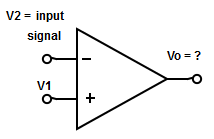
a) 180o in phase with input signal
b) 180o out of phase with input signal
c) Same as that of input signal
d) Output signal cannot be determined
View Answer
Explanation: The input signal is given to the inverting input terminal. Therefore, the output Vo is 180o out of phase with input signal V2.
2. Which of the following electrical characteristics is not exhibited by an ideal op-amp?
a) Infinite voltage gain
b) Infinite bandwidth
c) Infinite output resistance
d) Infinite slew rate
View Answer
Explanation: An ideal op-amp exhibits zero output resistance so that output can drive an infinite number of other devices.
3. An ideal op-amp requires infinite bandwidth because
a) Signals can be amplified without attenuation
b) Output common-mode noise voltage is zero
c) Output voltage occurs simultaneously with input voltage changes
d) Output can drive infinite number of device
View Answer
Explanation: An ideal op-amp has infinite bandwidth. Therefore, any frequency signal from 0 to ∞ Hz can be amplified without attenuation.
4. Ideal op-amp has infinite voltage gain because
a) To control the output voltage
b) To obtain finite output voltage
c) To receive zero noise output voltage
d) None of the mentioned
View Answer
Explanation: As the voltage gain is infinite, the voltage between the inverting and non-inverting terminal (i.e. differential input voltage) is essentially zero for finite output voltage.
5. Determine the output voltage from the following circuit diagram?
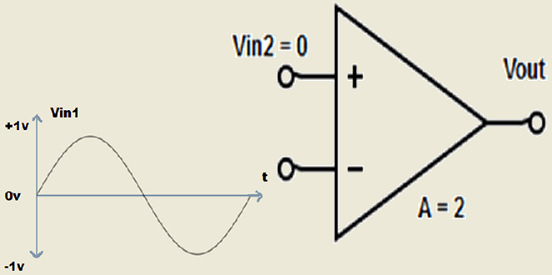
a) 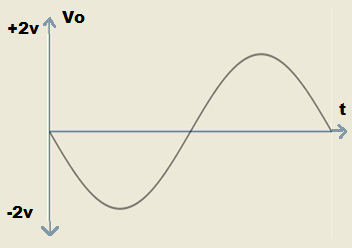
b)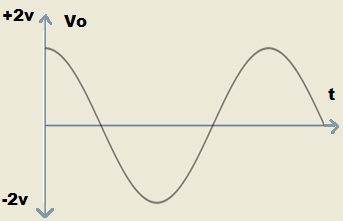
c) 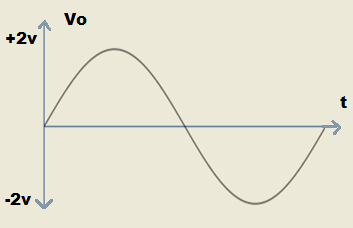
d) None of the mentioned
View Answer
Explanation: In an ideal op-amp when the inverting terminal is zero. The output will be in-phase with the input signal.
6. Find the output voltage of an ideal op-amp. If V1 and V2 are the two input voltages
a) VO= V1-V2
b) VO= A×(V1-V2)
c) VO= A×(V1+V2)
d) VO= V1×V2
View Answer
Explanation: The output voltage of an ideal op-amp is the product of gain and algebraic difference between the two input voltages.
7. How will be the output voltage obtained for an ideal op-amp?
a) Amplifies the difference between the two input voltages
b) Amplifies individual voltages input voltages
c) Amplifies products of two input voltage
d) None of the mentioned
View Answer
Explanation: Op-amp amplifies the difference between two input voltages and the polarity of the output voltage depends on the polarity of the difference voltage.
8. The signal to an inverting terminal of an ideal op-amp is zero. Find the output voltage, if the other input voltage is
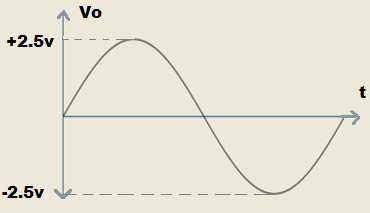
a) 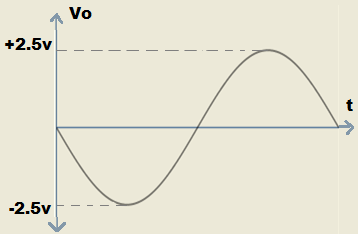
b) 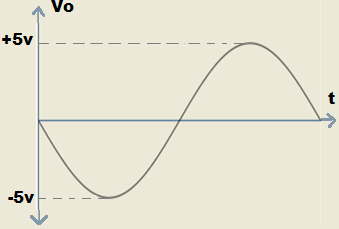
c) 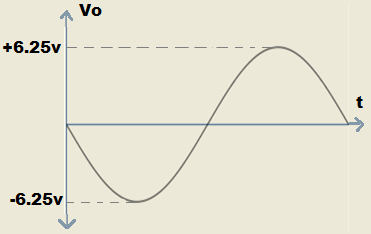
d) Data provided is insufficient
View Answer
Explanation: Although the output is 180o out of phase with input signal, the gain of the amplifier is not given.
9. Which is not the ideal characteristic of an op-amp?
a) Input Resistance –> 0
b) Output impedance –> 0
c) Bandwidth –> ∞
d) Open loop voltage gain –> ∞
View Answer
Explanation: Input resistance is infinite so almost any signal source can drive it and there is no loading of the preceding stage.
10. Find the ideal voltage transfer curve of a normal op-amp.
a) 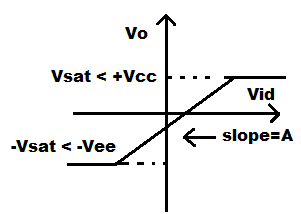
b) 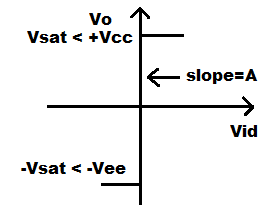
c) 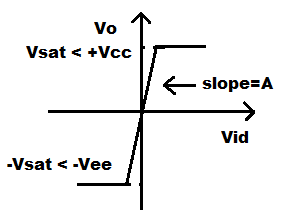
d) 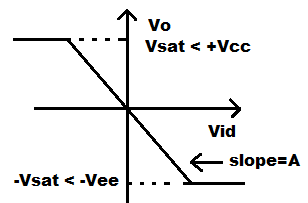
View Answer
Explanation: The ideal voltage transfer curve would be almost vertical because of the very large value of gain.
11. Find the input voltage of an ideal op-amp. It’s one of the inputs and output voltages are 2v and 12v. (Gain=3)
a) 8v
b) 4v
c) -4v
d) -2v
View Answer
Explanation: The output voltage, VO = (Vin1– Vin2)
=> 12v=3×(2- Vin2)
=> Vin2= -2v.
12. Which factor determine the output voltage of an op-amp?
a) Positive saturation
b) Negative saturation
c) Both positive and negative saturation voltage
d) Supply voltage
View Answer
Explanation: Output voltage is proportional to input voltage only until it reaches the saturation voltage. The output cannot exceed the positive and negative saturation voltage. These saturation voltages are specified by an output voltage swing rating of the op-amp for given values of supply voltage.
Sanfoundry Global Education & Learning Series – Linear Integrated Circuits.
To practice all areas of Linear Integrated Circuits, here is complete set of 1000+ Multiple Choice Questions and Answers.
If you find a mistake in question / option / answer, kindly take a screenshot and email to [email protected]
